Impulsive X1.5 solar flare erupts from geoeffective AR 3006
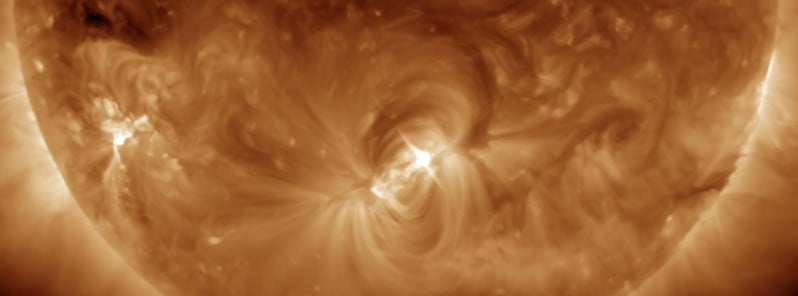
An impulsive solar flare measuring X1.5 erupted at 13:55 UTC on May 10, 2022. The event started at 13:50 UTC and ended at 13:59.
The source is Active Region 3006, located at the center of the solar disc, capable of producing Earth-directed coronal mass ejections (CMEs).
A Type II Radio Emission with an estimated velocity of 1 767 km/s was registered at 13:58 UTC, suggesting a CME was produced.
Additionally, A Type IV radio emission was registered at 14:07 UTC. Type IV emissions occur in association with major eruptions on the Sun and are typically associated with strong coronal mass ejections and solar radiation storms.
This region has a ‘beta-delta’ magnetic configuration and is capable of producing more strong to major eruptions on the Sun.
Earth-directed CMEs are possible from this region in the days ahead.
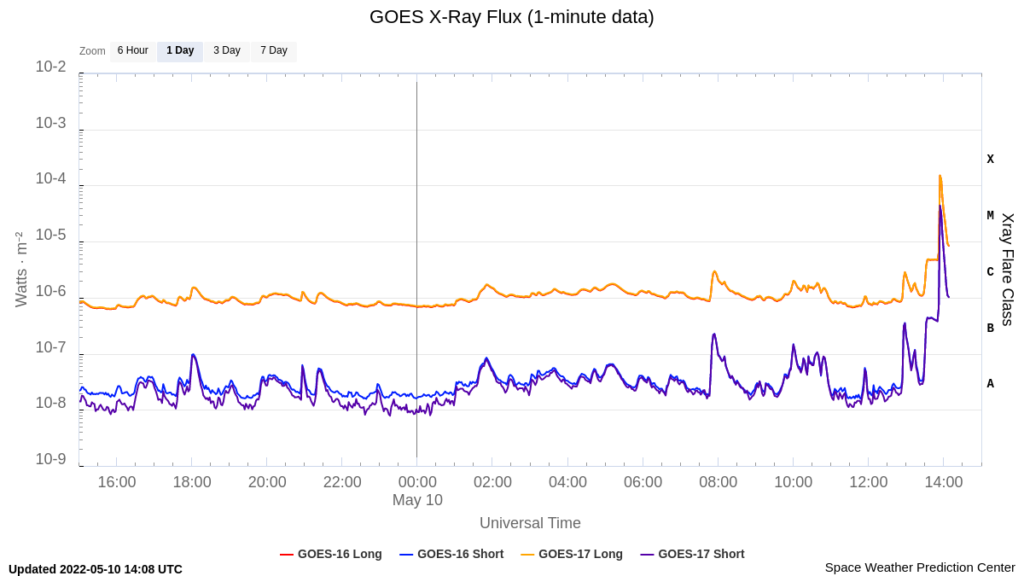

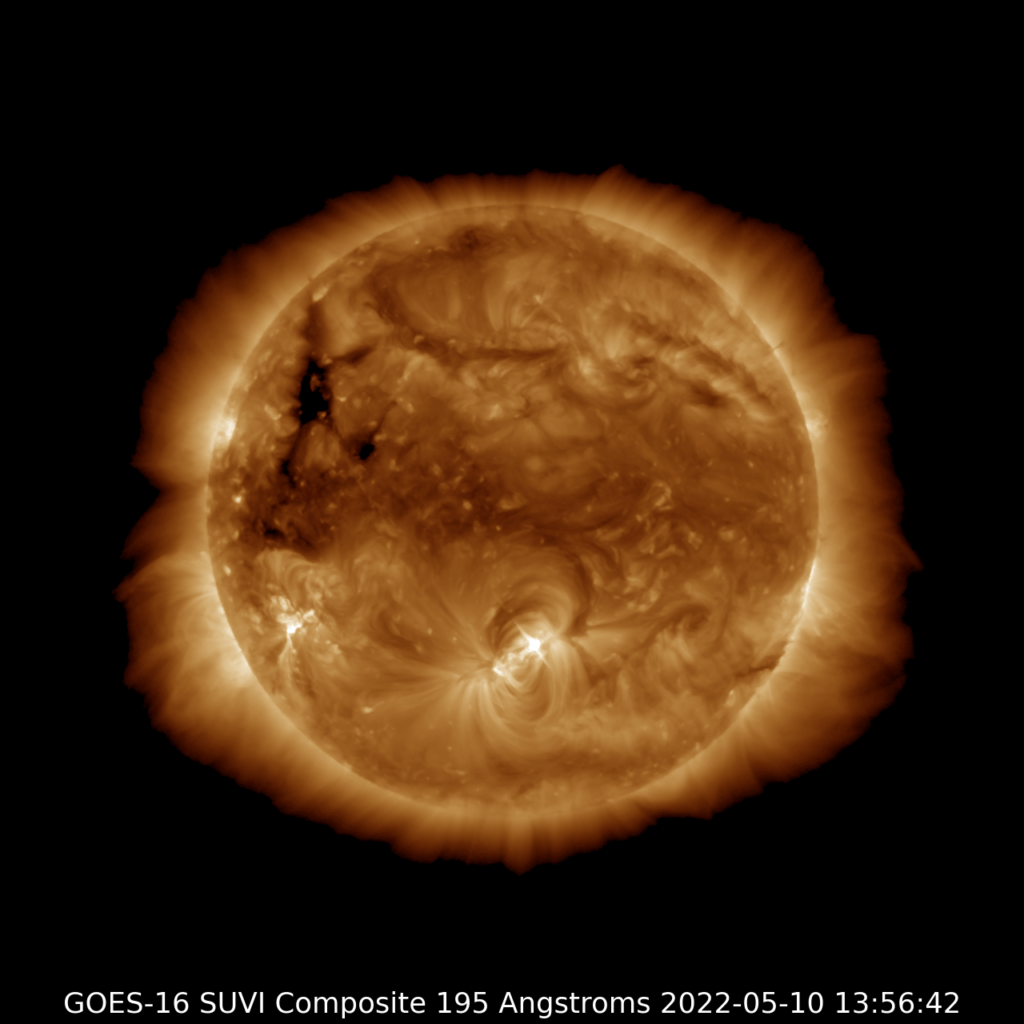

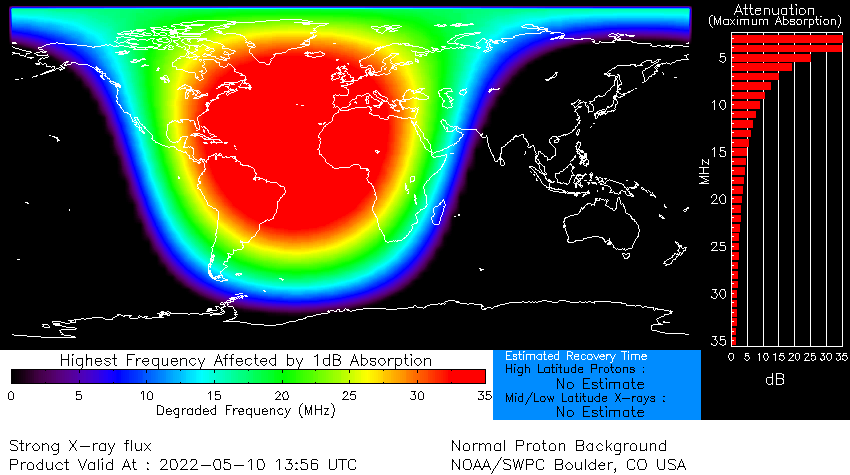

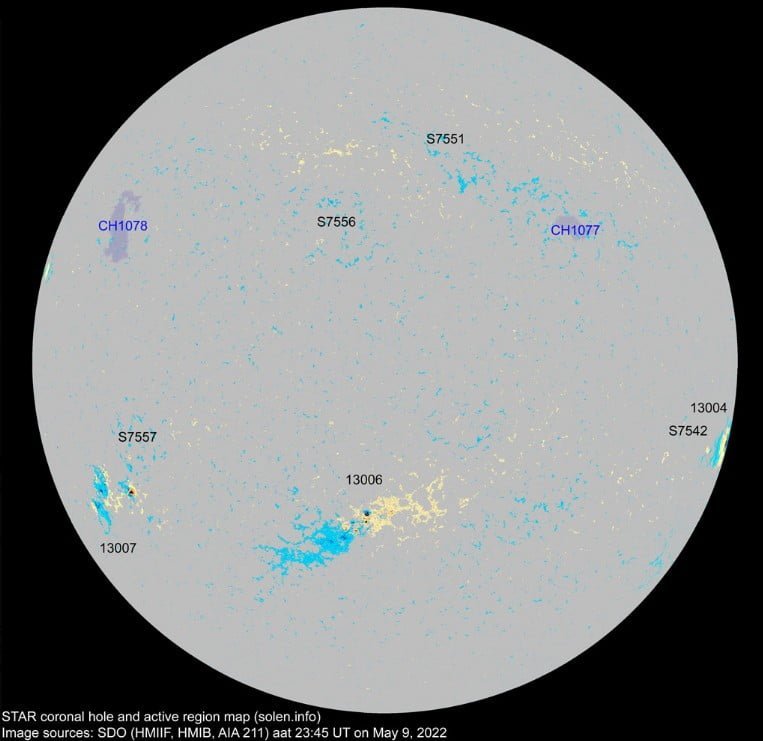

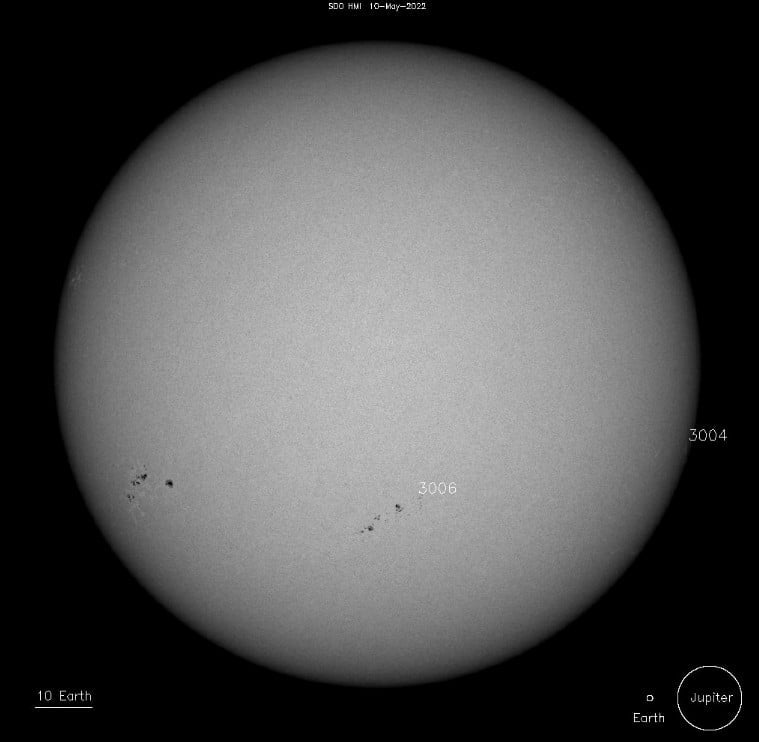

Solar activity was at low levels in 24 hours to 12:30 UTC today.
Region 3006 (S31W01, Eho/beta-delta) developed more intermediate and trailer spots, and was responsible for several low level C-class flares.1
Region 3007 (S24E51, Eso/beta) continued to rotate onto the visible disk and developed a couple of additional trailer spots. This region was also responsible for a few C-class flares, including the largest of the period; a C2/Sf flare at 07:55 UTC on May 10.
From around 07:16 to 11:12 UTC on May 10, an approximately 35-degree long filament could be seen lifting off the SW quadrant of the Sun. Analysis will be conducted as soon as new coronagraph imagery becomes available to determine if there is an Earth-directed component.
Solar wind parameters reflected a background solar wind regime during the same period.
Total field averaged near 5 nT, the Bz component was between +/-5 nT, and wind speed decreased to end the period below 300 km/s.
The phi angle was mostly positive until around 03:27 UTC on May 10 when it shifted into a negative orientation.
References:
1 Forecast Discussion – Issued 2022 May 10 1230 UTC – Prepared by the U.S. Dept. of Commerce, NOAA, Space Weather Prediction Center
Featured image credit: NOAA/GOES-16 SUVI

Commenting rules and guidelines
We value the thoughts and opinions of our readers and welcome healthy discussions on our website. In order to maintain a respectful and positive community, we ask that all commenters follow these rules.